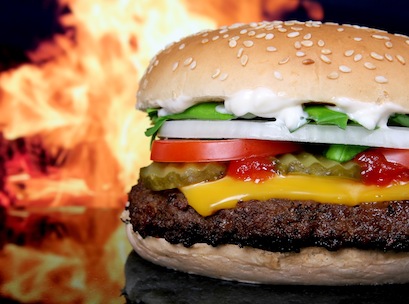 A dramatic health kick has transformed the fast food services industry, with revenue expected to grow by an annualised three per cent over the five years through 2013-14, according to IbisWorld.
A dramatic health kick has transformed the fast food services industry, with revenue expected to grow by an annualised three per cent over the five years through 2013-14, according to IbisWorld.
This change in the industry has been largely driven by increased consumer awareness about the nutritional content of fast food and a conscious effort by consumers to choose healthier options. Industry operators have responded with the introduction of a range of healthier choices with lower fat, sugar and salt contents.
This change in consumer preferences has also led to an influx of new operators offering healthier fast food options. Industry revenue is forecast to post solid growth over 2013-14, rising by 2.8 per cent to $15.3 billion.
Demand for fast food has been supported by growth in disposable incomes over the past five years. IbisWorld industry analyst, Stephen Gargano, said trends in consumer age, particularly the increasing median age of the Australian population, have fuelled demand for healthier fast food options.
“As a result, traditional fast food has declined as a share of revenue, while revenue from healthier categories has exhibited solid growth,” said Gargano.
Despite this, competition between players remains intense and growth in the range of pre-prepared meals offered by supermarkets has eroded potential revenue for operators.
Over the next five years, greater convenience and nutritional content are expected to drive revenue. According to Gargano, “operators are likely to focus on providing consumers with an evolving and adaptable product selection as they try to win market share.”
Traditional fast food operators are expected to further complement their classic ranges with newer healthy options, catering to changing consumer tastes. The industry is projected to undergo some change as a result of increasing internet usage and mobile-based ordering applications. These changes are expected to make ordering and delivery more appealing to younger demographics.
Food vans are also expected to take off over the next five years, providing competition for existing players at key locations and events.
The fast food services industry is characterised by a medium level of market share concentration. Concentration in the industry has remained relatively constant over the past five years. The move towards healthier options and away from traditional fast food has resulted in the entry of some smaller players, which may provide competition to larger players over the next five years.
While barriers to entry and capital requirements for new operators are low, strong competition and a mature life cycle status will likely hinder further new players from entering the industry and gaining market share. Major players include McDonald’s Australia, Yum! Restaurants Australia (KFC and Pizza Hut), Subway Systems Australia and Competitive Foods Australia (Hungry Jack’s).
For more information, visit IbisWorld’s Fast Food Services report.





